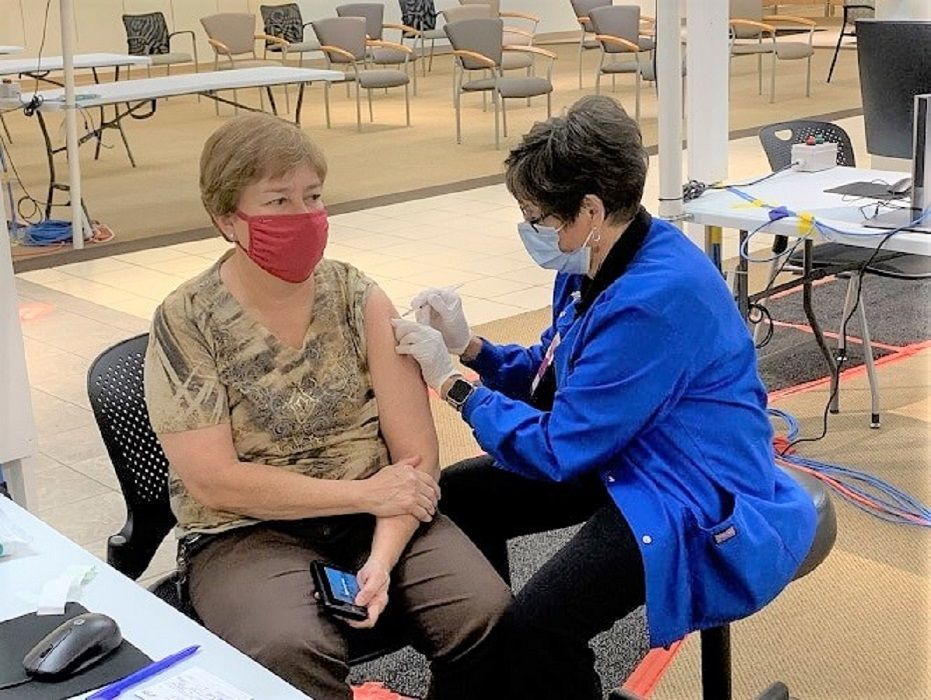Comirnaty—Pfizer’s newly renamed COVID-19 vaccine—recently became the name heard around the world after receiving the FDA’s full approval.
Many celebrated the news, grateful to see the agency’s official thumbs up for the public’s path through the pandemic. Others took it as their cue to get vaccinated, leading to a 17% uptick in Americans receiving their first dose.
Others grew curious, if not concerned. A history-making vaccine received approval to combat a history-making pandemic in history-making time.
These reactions demonstrate everyone’s diverse experiences of the pandemic, and the collective hope of overcoming it. But among all the possible reactions to the news of Comirnaty’s approval, one seems to matter most to the American public: confidence.
Is it possible to be confident that the vaccine’s approval didn’t come with cut corners or overlooked risks?
The short answer: yes.
The FDA has a tried-and-true approval process to ensure a new vaccine is safe and effective—and available when needed most, like in a pandemic: the fast track.
Moving at Operation Warp Speed
On May 15, 2020, President Trump announced Operation Warp Speed. Against the backdrop of a pandemic gaining speed—with no approved vaccines available—the announcement suggested nothing less its name: expedited efficiency. More specifically, the endeavor challenged agencies and companies to combat the pandemic in record time by preparing to “deliver 300 million doses of a safe, effective vaccine” in less than a year.
Getting a safe, effective vaccine for a new virus into the immune systems of Americans in less than a year seemed beyond belief. But the advances in vaccine technology; the global cooperation of scientists, researchers, and innovators; and the readiness of federal agencies collectively accepted the challenge.
As Dr. Nancy Pook, Network Emergency Medical Director at Kettering Health, shared, “As our world moved quickly to stamp out the tangible threat of the pandemic, the FDA and other organizations had to adapt while still ensuring that quality measures are in place.”
And in December, the FDA authorized Pfizer-BioNTech’s vaccine for emergency use. The emergency use authorization (EUA), though not an approval, meant the FDA determined that the vaccine’s benefits outweighed its risks.
The push against the pandemic had begun. And the number of patients experiencing COVID-19, hospitalizations, and deaths dropped between January and June 2021.
Moving from emergency use to fully approved
Then in May, a year after Operation Warp Speed launched, Pfizer applied for FDA approval.
Although Pfizer’s vaccine already had the FDA’s go-ahead for emergency use, its potential approval still required the full measure of the FDA’s scrutiny. The agency, shared Dr. Pook, “takes a wrap-around approach to the efficacy and safety data initially provided with the initial vaccine studies.”
The approval process involves teams of the FDA’s experts analyzing all of a vaccine’s clinical and testing data, communicating with vaccine-development leaders, inspecting a company’s facilities, and determining the safety and efficacy of a vaccine.
Most vaccine applications, though, aren’t submitted in the throes of a pandemic.
For Pfizer’s vaccine, if the FDA were to process the thousands of reams of data (including data collected from the millions of fully vaccinated US citizens), inspect the facilities where its manufactured, and determine the safety and efficacy of the vaccine, and do so to help the US respond to the pressures of the pandemic, it would need to involve every available hand to help.
To do just that, the FDA can grant a fast-track designation.
Moving to the FDA’s fast lane
In 1997, Congress affirmed the need for the FDA to quicken their approval process when necessary through the Food and Drug Administration Act (FDAMA).
Because viruses don’t wait for the conventional vaccine-approval process, through FDAMA, the FDA can grant certain designations to a vaccine still going through clinical trials when
- No approved alternative exists, establishing what the FDA calls an “unmet medical need.”
- The available data on the vaccine shows that its benefits will outweigh the risks, both known and perceived.
Pfizer applied for and received fast track designation in July 2020, as Operation Warp Speed picked up momentum.
When a vaccine receives the FDA’s fast track process, it allows for
- The possibility of a “rolling review.” A company can submit portions of their application throughout the process rather than waiting to complete the application and wait for its review.
- Early and frequent communication between the FDA and the company developing the vaccine throughout the application process.
- The possibility for other approaches to be added, such as “priority review,” which Pfizer’s vaccine received in July 2021, which put Pfizer’s application at the top of the FDA’s to-do list.
“The fast-track designation allows for safe implementation as well as ongoing surveillance,” said Dr. Pook.
With the FDA’s fast track designation, followed by its priority review, Pfizer’s vaccine (now called Comirnaty) received the full volume of the FDA’s resources.
“It was truly an all hands-on-deck approach,” said an FDA representative.
Moving toward tomorrow
The mix of celebration, curiosity, and concern to Comirnaty’s approval makes sense. A globe-sized undertaking occurred in record time, and just as hospitals again find their halls filled with patients on ventilators.
At the top of that list, though, the American public can have confidence.
A necessary step has been taken toward a tomorrow where a nearly two-year-long pandemic is yesterday’s news. Granted, it’s only one step. But it’s a monumental step—taken at warp speed.
(Have questions about Comirnaty? Email the FDA at ocod@fda.hhs.gov)










